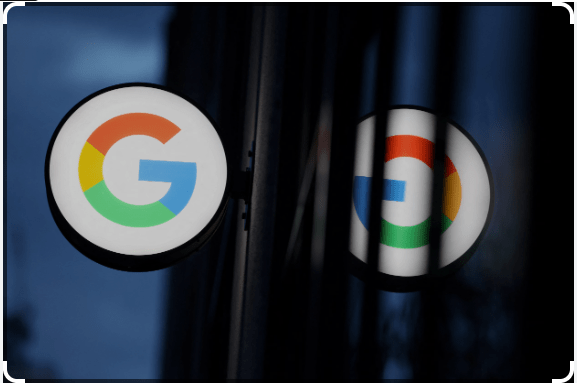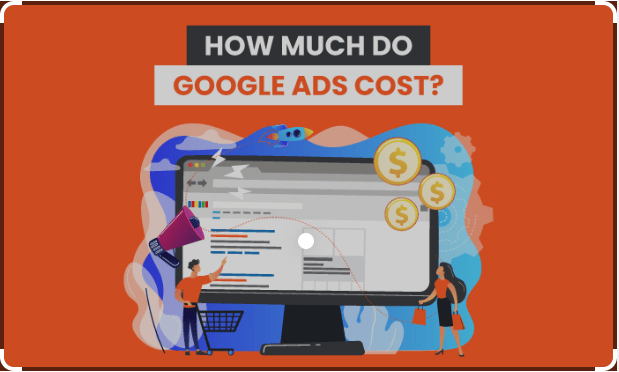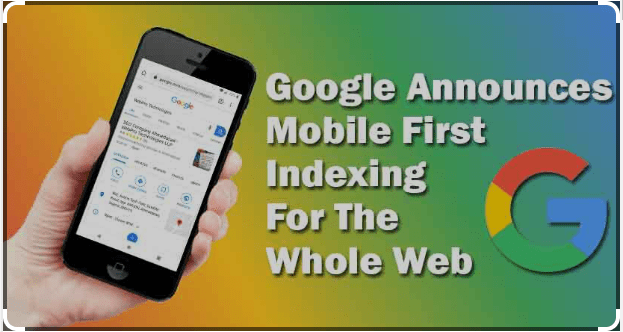Meta Description: Discover the incredible potential of personalized ads on Google and how they are reshaping the landscape of targeted marketing. Explore the benefits, challenges, and ethical considerations surrounding this powerful advertising tool.
Introduction:
In the digital age, advertising has undergone a dramatic transformation, and personalized ads have emerged as a game-changer in the world of marketing. Among the frontrunners in this revolution is Google, whose innovative approach to targeted advertising has redefined the way businesses connect with their audiences. In this blog post, we will delve into the concept of personalized ads on Google, exploring their benefits, challenges, and ethical considerations.
I. Understanding Personalized Ads:
Personalized ads have emerged as a powerful tool in the world of advertising. By tailoring marketing messages to suit the interests, preferences, and behaviors of individual users, personalized ads have revolutionized the way businesses connect with their target audience. In this article, we will explore the concept of personalized ads, how they work, and the benefits they offer to both advertisers and consumers.
Personalized ads, also known as targeted ads, are designed to deliver highly relevant content to users based on their demographics, online activities, and previous interactions. Platforms like Google have amassed vast amounts of user data, allowing advertisers to create customized advertising campaigns that resonate with specific audiences. These ads can be displayed on various online platforms, such as search engines, social media, video streaming services, and email platforms.
The foundation of personalized ads lies in data collection and analysis. When users interact with online platforms, they leave behind valuable information that advertisers can leverage. This data includes browsing history, search queries, location data, purchase behavior, and demographic details. By analyzing this data, advertisers gain insights into user preferences and can create targeted ads that are more likely to capture their attention and generate conversions.
One of the key benefits of personalized ads is the enhanced user experience they provide. Instead of being bombarded with irrelevant ads, users are presented with content that aligns with their interests and needs. This creates a more engaging and relevant online experience, where users are more likely to respond positively to advertisements that cater to their specific tastes. By delivering personalized content, businesses can establish stronger connections with potential customers, fostering trust and loyalty.
For advertisers, personalized ads offer several advantages. First and foremost, they allow businesses to reach their target audience with precision. Rather than casting a wide net and hoping to capture the attention of potential customers, personalized ads enable advertisers to focus their resources on individuals who are more likely to be interested in their products or services. This targeted approach reduces wasted ad spend and increases the return on investment (ROI) for advertisers.
Moreover, personalized ads enable businesses to craft highly tailored messages. By analyzing user data, advertisers can gain insights into user preferences, behaviors, and purchase patterns. This information can be used to create ad content that resonates with specific segments of the target audience. As a result, personalized ads have a higher chance of capturing the attention of users, leading to increased engagement and conversions.
However, personalized ads also come with challenges and ethical considerations. Privacy concerns arise due to the use of personal data to deliver targeted ads. It is crucial for businesses and advertisers to comply with data privacy regulations, obtain user consent, and ensure transparency in data collection and usage practices. Respecting user privacy and protecting their personal information should always be a top priority.
Another challenge is the risk of ad fatigue and overexposure. When users are repeatedly exposed to the same personalized ads, they may become desensitized or annoyed. Advertisers must carefully manage the frequency and variety of ads to avoid overwhelming users and ensure a positive user experience.
Ethical considerations also come into play with personalized ads. Advertisers must ensure that their targeting practices do not cross ethical boundaries or exploit vulnerable individuals. They should be transparent about how user data is used and provide users with control over their preferences and the ability to opt out of personalized ads if desired. Responsible advertising practices are crucial to maintaining trust and safeguarding the integrity of personalized ads.
Personalized ads have transformed the advertising landscape by delivering highly relevant content to users based on their demographics, preferences, and online behaviors. They enhance the user experience, increase ROI for advertisers, and enable businesses to establish stronger connections with their target audience. However, it is essential for businesses and advertisers to navigate the challenges and ethical considerations associated with personalized ads responsibly. By striking a balance between personalization, privacy, and transparency, personalized ads can continue to revolutionize the way brands engage with consumers in the digital age.
II. The Benefits of Personalized Ads on Google:
In the vast digital landscape, Google has emerged as a frontrunner in personalized advertising. By harnessing its extensive user data and advanced targeting capabilities, Google enables businesses to deliver highly tailored advertisements to their target audience. The use of personalized ads on Google offers a myriad of benefits to both advertisers and consumers alike. In this article, we will explore the advantages that personalized ads bring to the table.
- Enhanced User Experience: Personalized ads on Google create a more engaging and relevant user experience. By leveraging user data, Google can deliver advertisements that align with users’ interests, preferences, and online behaviors. Users are more likely to respond positively to ads that resonate with them, leading to increased engagement and higher chances of conversion. Instead of being bombarded with irrelevant ads, users are presented with content that is tailored to their specific needs, resulting in a more satisfying online experience.
- Increased Advertising Efficiency: One of the primary benefits of personalized ads on Google is improved advertising efficiency. By leveraging sophisticated targeting algorithms, Google ensures that ads are displayed to users who are more likely to be interested in the products or services being advertised. This targeted approach reduces wasted ad spend on audiences that are unlikely to convert, allowing advertisers to optimize their return on investment (ROI). Advertisers can reach their ideal customers with precision, maximizing the impact of their advertising campaigns.
- Improved Ad Relevancy: Personalized ads allow businesses to craft highly relevant messages that resonate with their target audience. By analyzing user data and understanding their preferences and behaviors, advertisers can create ads that address specific pain points, offer personalized solutions, and showcase products or services that are most likely to appeal to the target audience. This relevance increases the effectiveness of the ads, as users are more likely to pay attention and engage with content that is directly related to their interests and needs.
- Targeting Capabilities: Google provides advertisers with a wealth of targeting options to ensure their ads reach the right audience. Advertisers can define their target audience based on demographics such as age, gender, location, and interests. Google also allows advertisers to leverage data from previous interactions, such as website visits or search queries, to further refine targeting. This level of granularity enables advertisers to connect with users who are most likely to be receptive to their message, resulting in higher conversion rates and improved campaign performance.
- Measurable Results and Insights: Google’s personalized ad platform offers robust analytics and tracking capabilities, allowing advertisers to measure the performance of their campaigns in real-time. Advertisers can gain insights into key metrics such as impressions, clicks, conversions, and cost per acquisition. This data-driven approach enables advertisers to make informed decisions, optimize their campaigns, and allocate their advertising budget more effectively. By understanding which ads are resonating with the audience and driving results, advertisers can refine their strategies for even better performance.
- Ad Format Variety: Google provides a wide range of ad formats to suit different campaign objectives and target audience preferences. From search ads to display ads, video ads, and native ads, advertisers have the flexibility to choose the format that best suits their goals. This variety allows businesses to deliver personalized messages in formats that are most engaging and effective for their target audience, enhancing the overall impact of their advertising efforts.
Personalized ads on Google offer numerous benefits for advertisers and consumers alike. They enhance the user experience by delivering relevant content, improve advertising efficiency by targeting the right audience, and increase ad relevancy by crafting tailored messages. With advanced targeting capabilities, measurable results, and a variety of ad formats, personalized ads on Google empower businesses to connect with their target audience effectively and drive meaningful results.
III. Challenges and Considerations:
While personalized ads offer significant benefits to advertisers and users, they also come with a set of challenges and considerations. Advertisers must navigate these challenges responsibly to ensure a positive user experience and maintain ethical advertising practices. In this article, we will explore some of the key challenges and considerations associated with personalized ads.
- Privacy Concerns: One of the primary concerns surrounding personalized ads is the collection and use of user data. Personalized ads rely on accessing and analyzing user information, such as browsing history, search queries, and demographics. This raises privacy concerns, as users may be apprehensive about their data being used for targeted advertising purposes. Advertisers must prioritize data privacy and transparency, ensuring that they comply with relevant data protection regulations and obtain user consent for data collection and usage.
- Transparency and Trust: To build and maintain trust with users, advertisers need to be transparent about their data practices and how personalized ads are delivered. Users should have clear visibility into how their data is being used and be given the option to opt out of personalized ads if desired. Advertisers should provide clear and concise privacy policies and make efforts to educate users about the benefits and potential risks associated with personalized advertising.
- Ad Fatigue and Overexposure: Personalized ads run the risk of overexposing users to repetitive advertisements, leading to ad fatigue. When users see the same ads repeatedly, they may become desensitized or annoyed, resulting in a negative user experience. Advertisers need to carefully manage ad frequency and variety to avoid overwhelming users and ensure a balanced and engaging ad experience.
- Ethical Considerations: Personalized ads raise ethical considerations related to the responsible use of user data and the potential for manipulation. Advertisers must ensure that their targeting practices do not cross ethical boundaries or exploit vulnerable individuals. They should avoid deceptive or misleading advertising practices and prioritize transparency in how user data is used. Responsible advertising practices are essential to maintain the trust and respect of users.
- Filter Bubbles: Another challenge associated with personalized ads is the potential creation of filter bubbles. Personalized ads can reinforce users’ existing beliefs and preferences, limiting their exposure to diverse perspectives and information. This can lead to echo chambers where users are exposed only to content that aligns with their existing views. Advertisers should be mindful of this challenge and strive to strike a balance between personalization and ensuring users are exposed to a variety of perspectives and content.
- Ad Blockers: With the rise of ad blockers, users have gained more control over the ads they see online. Some users choose to block personalized ads altogether, either due to privacy concerns or a desire to minimize interruptions while browsing. Advertisers must recognize this trend and consider alternative strategies, such as providing value-added content or engaging storytelling, to reach and engage with users who actively block personalized ads.
- Regulatory Compliance: Advertisers must comply with various regulatory frameworks related to data protection and privacy, such as the General Data Protection Regulation (GDPR) in the European Union. These regulations outline specific requirements for the collection, storage, and use of personal data. Advertisers should stay informed about relevant regulations and ensure that their personalized advertising practices align with legal requirements.
While personalized ads offer numerous benefits, advertisers must navigate several challenges and considerations. Privacy concerns, transparency, ad fatigue, ethical considerations, filter bubbles, ad blockers, and regulatory compliance all require careful attention and responsible practices. By addressing these challenges and considerations, advertisers can ensure a positive user experience, maintain trust, and uphold ethical standards in personalized advertising.
IV. The Future of Personalized Ads:
Personalized ads have already made a significant impact on the advertising landscape, but their evolution is far from over. As technology continues to advance and consumer expectations evolve, the future of personalized ads promises exciting developments and new opportunities for advertisers. In this article, we will explore some key trends and predictions that are shaping the future of personalized ads.
- Artificial Intelligence and Machine Learning: Artificial intelligence (AI) and machine learning (ML) are expected to play a pivotal role in the future of personalized ads. These technologies have the potential to enhance targeting capabilities, improve ad relevancy, and optimize campaign performance. By analyzing vast amounts of data and identifying patterns, AI and ML algorithms can better understand user behavior, preferences, and intent. This deeper understanding will enable advertisers to deliver even more personalized and relevant advertisements, driving higher engagement and conversions.
- Hyper-Personalization: Personalized ads will become increasingly granular and tailored to individual users. With advancements in data analysis and AI, advertisers will be able to create highly customized ad experiences that go beyond demographics and basic user preferences. Hyper-personalization will involve understanding and leveraging user context, such as location, device, time of day, and even current emotions. Advertisements can be dynamically adapted to suit the user’s immediate needs and preferences, creating a truly personalized and contextual advertising experience.
- Voice-Activated Ads: As voice-activated devices like smart speakers and virtual assistants become more prevalent, personalized ads will adapt to this emerging medium. Voice-activated ads will leverage voice recognition technology to deliver personalized audio messages to users. Advertisers will need to optimize their campaigns for voice search and adapt their messaging to suit the conversational nature of voice interactions. With voice-activated ads, advertisers can engage users in a more natural and seamless manner, providing personalized recommendations, offers, and information.
- Enhanced Cross-Platform Integration: The future of personalized ads will focus on delivering consistent and cohesive experiences across multiple platforms and devices. Advertisers will leverage cross-platform integration to reach users seamlessly as they move from one device to another. This integration will enable advertisers to deliver personalized ads that adapt to the user’s journey, ensuring continuity and reinforcing brand messaging. The ability to track user interactions across platforms will also provide advertisers with valuable insights to refine targeting and optimize campaigns.
- Augmented Reality (AR) and Virtual Reality (VR): AR and VR technologies present exciting possibilities for personalized ads. Advertisers can use these immersive technologies to provide users with personalized, interactive, and engaging ad experiences. For example, users could virtually try on clothing or visualize how furniture would look in their home. AR and VR personalized ads have the potential to create unique and memorable experiences, driving higher levels of user engagement and brand recall.
- Privacy and Data Protection: With growing concerns around privacy and data protection, the future of personalized ads will involve a heightened focus on user consent, transparency, and data security. Advertisers will need to ensure compliance with evolving privacy regulations and implement robust data protection measures. Respect for user privacy will become a core principle in personalized advertising, with users having greater control over their data and the ability to customize their ad preferences.
- Ethical Considerations and Diversity: As personalized ads become more sophisticated, ethical considerations will gain even greater importance. Advertisers will need to prioritize responsible advertising practices, ensuring that personalized ads do not perpetuate biases or discrimination. Embracing diversity and inclusivity will be essential to avoid filter bubbles and echo chambers, and to foster a more inclusive advertising ecosystem.
The future of personalized ads is characterized by advancements in technology, hyper-personalization, voice-activated ads, cross-platform integration, AR and VR experiences, privacy and data protection, and ethical considerations. By leveraging these trends, advertisers can create highly relevant and engaging ad experiences that resonate with users and drive meaningful results. The future of personalized ads holds immense potential to transform the way businesses connect with their target audience and shape the advertising landscape for years to come.
Conclusion:
Personalized ads on Google have transformed the advertising landscape, offering businesses unparalleled opportunities to connect with their target audience. By leveraging user data, Google enables advertisers to deliver highly relevant content, enhancing user experience and optimizing their marketing efforts. However, it is essential for businesses and advertisers to navigate the challenges and ethical considerations associated with personalized ads responsibly. With a thoughtful approach, personalized ads on Google can continue to revolutionize targeted marketing while respecting user privacy and maintaining ethical standards.
References:







